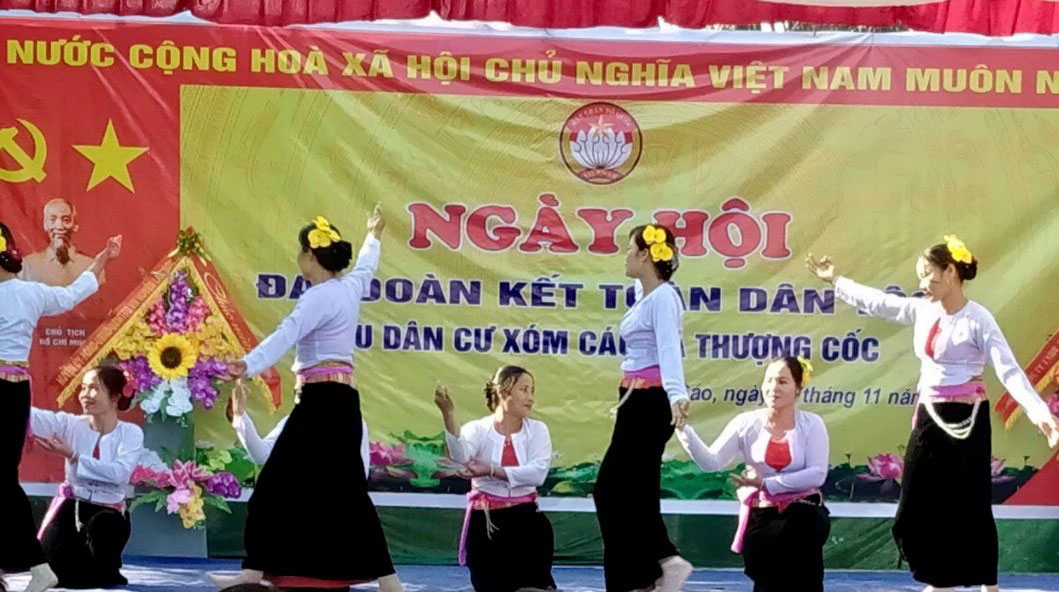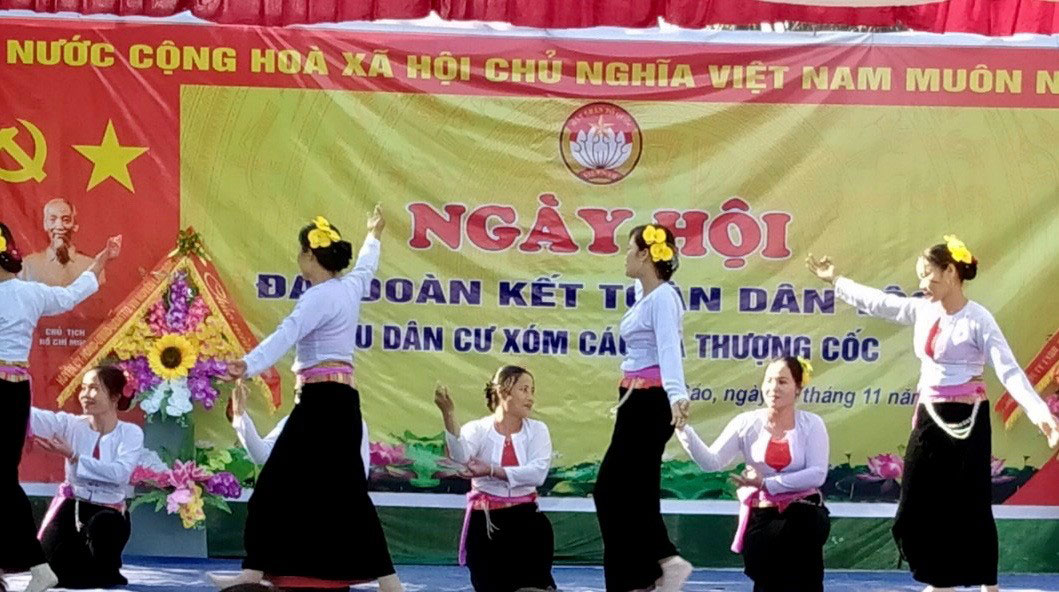
(HBO) – People in Thuong Coc commune, Lac Son district, Hoa Binh province, have raised the sense of self-consciousness and self-management through many models. According to Bui Van Khanh, Secretary of the communal Party Committee, thanks to creativeness and joint efforts, Thuong Coc has become a bright spot in the district in new-style rural area building.
 Through
self-management models, the material and spiritual life of residents in Cao
hamlet, Thuong Coc commune, Lac Son district, has been improved, contributing
to new-style rural area building.
Through
self-management models, the material and spiritual life of residents in Cao
hamlet, Thuong Coc commune, Lac Son district, has been improved, contributing
to new-style rural area building.
Among 98 households in Cao hamlet, the Muong ethnic minority group makes up
98 percent. Locals mainly earn their living through agriculture, while a
handful of them shifted to business. Last year, they self-financed the
installation of a lighting network, and tree planting along local roads,
covering nearly 600m.
They have also supported each other in building walls around their houses, thus
giving a facelift to the locality.
Such activities have been replicated in Me Com and Luong hamlets.
Since 2017 when the self-management model was
piloted, residential areas in Thuong Coc commune have overhauled their
communications work, encouraging locals to raise funds for the construction of
lighting systems.
The standing board of the communal fatherland front has joined hands with its
member organisations to popularise local self-management models at conferences
and meeting in the residential areas. Besides, it helps the residential areas
to evaluate the models, assess the roles of the fatherland front working group
in integrating self-management models, while promoting the models within the
families and residential areas.
To date, the commune has four outstanding models, including local residents
joining hands to build hygienic latrines, build fence and gate, lighten rural
roads, and develop inter-family self-management groups.
The model "Local people support one and others in building hygienic latrines”
has received enthusiastic response from households in all 14 residential areas
in the commune. Meanwhile the model to build fence and gate has been carried
out in six residential areas.
Forty-eight inter-family self-management groups have operated effectively in
all residential areas.
Bui Thi Quyen, head of Cao hamlet, said the models are practical for the
community since they create a facelift
to the residential areas while ensuring security and order in the locality.
The four models have been carried out in accordance with the campaign "the
whole people promote solidarity to build new-style rural areas”, contributing
to concretising advanced criteria of a new-style rural commune./.
In Hoa Binh province, 11 traditional craft villages with more than 400 small-scaled production households have put in place a clean and green production model, establishing new standards for sustainable development. Waste collection sites and wastewater treatment facilities have been meticulously managed by local residents.
To make it easier for the residents to handle administrative procedures, Yen Bong Commune (Lac Thuy District) has identified the administrative reform as one of its key tasks. By implementing a range of synchronized solutions, the commune has seen the positive changes in the administrative reform, meeting the needs of its people.
Mai Chau district has firmly established itself as a standout destination on Vietnam’s tourism map, attracting both domestic and international visitors with its breathtaking landscapes, rich ethnic culture, and warm hospitality. However, beyond its natural and cultural charm, a secure and well-managed tourism environment has added to Mai Chau’s appeal.
As Vietnam enters a new phase of economic and administrative reform in 2025, Hoa Binh province is stepping up its efforts to streamline governance, boost economic growth, and attract investment.
The Hoa Binh provincial People's Committee held its monthly meeting on March 26 to review the progress of key projects, assess budget revenue and public investment disbursement, provide feedback on draft documents for submission to the provincial Party Committee's Standing Board, and discuss other important matters related to the committee's governance activities.
Playing a key role in Hoa Binh province’s economic development, Luong Son district has been focusing on science and technology development, innovation, and digital transformation.



 Through
self-management models, the material and spiritual life of residents in Cao
hamlet, Thuong Coc commune, Lac Son district, has been improved, contributing
to new-style rural area building.
Through
self-management models, the material and spiritual life of residents in Cao
hamlet, Thuong Coc commune, Lac Son district, has been improved, contributing
to new-style rural area building.